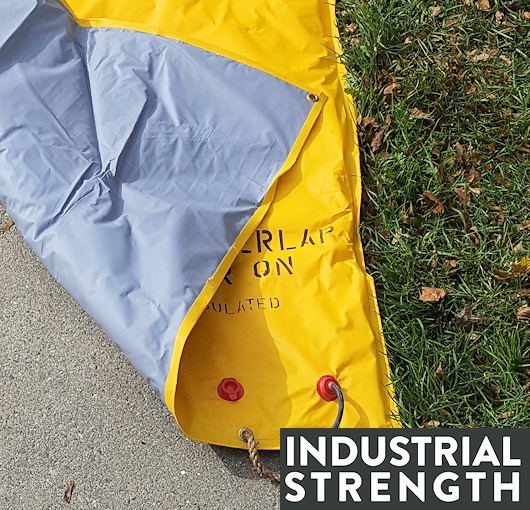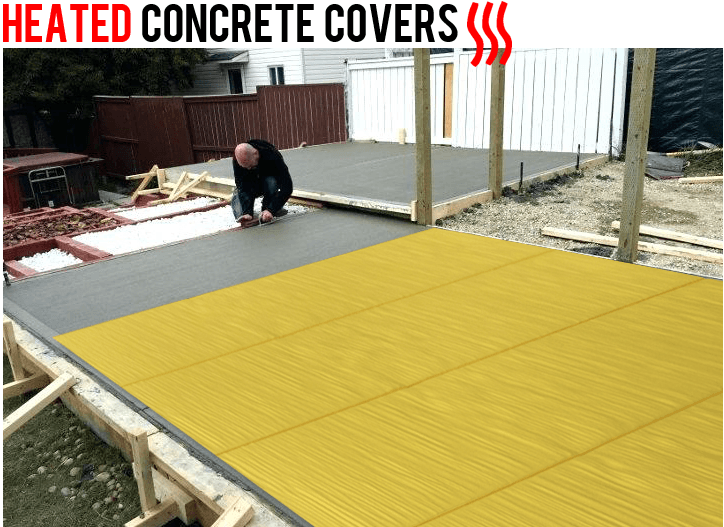
When is Temperature Too Cold For Concrete Curing?
According to research the perfect temperature to pour concrete to attain full strength is 55°F. The steady mix of cement and moisture forms bond which gives concrete its full strength, this steady forming of bonds is continuous and not observable in concrete, the temperature at this time is below 40°F. Daytime is always good for curing in any weather condition, during the daytime when the temperature is best, winter concrete setting puts risk that can result in a weak, inappropriate concrete. At night, If the temperature is at freezing degree, moisture inside the concrete tend to freeze and its freezing will expand resulting to a crack on the concrete, although, once the temperature drops below 40°F during a curing process, the concrete will take more time to get cured and reach its full strength. For a successful and accurate curing process at night or in a freezing weather condition, the procedures are to be taken right for the concrete to attain its full strength.
Want To Cure In Cold Months?
Cold months of the year are periods when concrete curing is complicated if not planned appropriately. One needs to know his strength in the concrete curing process and make certain considerations in cold months, otherwise, the process might be a failure. One’s strength has a big role to play when pouring concrete and determines what method to use in maintaining a warm environment and materials. One of the major challenges faced in concrete curing during cold months is ensuring the concrete sets prior to exposing it to freezing temperatures.
For a successful concrete curing process, the following should be taken into consideration:
- Apply heaters to thaw frozen ground, snow or ice.
- Cement should be mixed with hot water.
- All materials ought to be kept in an exceedingly warm location.
- Products designed for fast curing should be used. (These products will not set concrete as indicated, but will set it faster than standard materials.)
- Use additives responsible for hastening set time. (Be cautious; if additives contain salt or metal wire mesh in concrete, it will rust and cause the concrete to crack)
- Use additional cement. (Typically 100 lb/ cubic yard. This causes hotter reaction and concrete to hydrate more rapidly)
- Wait for the bleed water to evaporate. (Combining the water into the surface during final stage can weaken the surface. Bleeding comes last and takes longer time in cold weather; use squeegees or a vacuum to get rid of water quickly).
- Leave the framework until the concrete has reached full strength. (Early removal can risk the concrete and the surface might collapse)

The above procedure will assure you a successful curing but it is vital to keep the concrete at the conventional temperature of 55°F during a curing process, for the next 48 hours concrete temperature should be maintained at 55°F to enable cement and moisture mix well. Heated enclosure and insulated blanket are used mostly in cold weather condition, heated enclosure offers a wind and waterproof structure. In concrete curing, ventilation is important and ensuring a proper one is available for the space heater boost curing time. Heaters can cause an increase in carbon dioxide, this might result in carbonation on the top of the concrete.
Heated Concrete Blankets are effective in regulating temperature for concrete pouring and setting. ALCO concrete blankets are used in thawing snow or ice ground of new project before and after the concrete has been poured in other to prevent concrete from freezing, its blankets make sure that concrete is maintained at a standard temperature for curing process to take place successfully and concrete desired strength is reached. ALCO Concrete Blanket is the right choice for successful concrete curing in cold weather condition.
